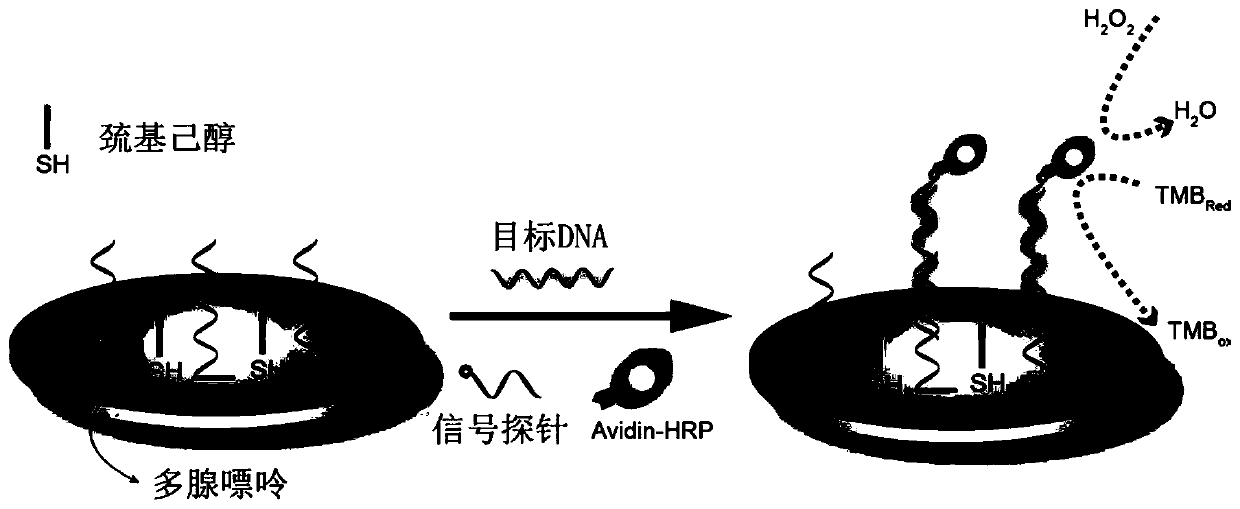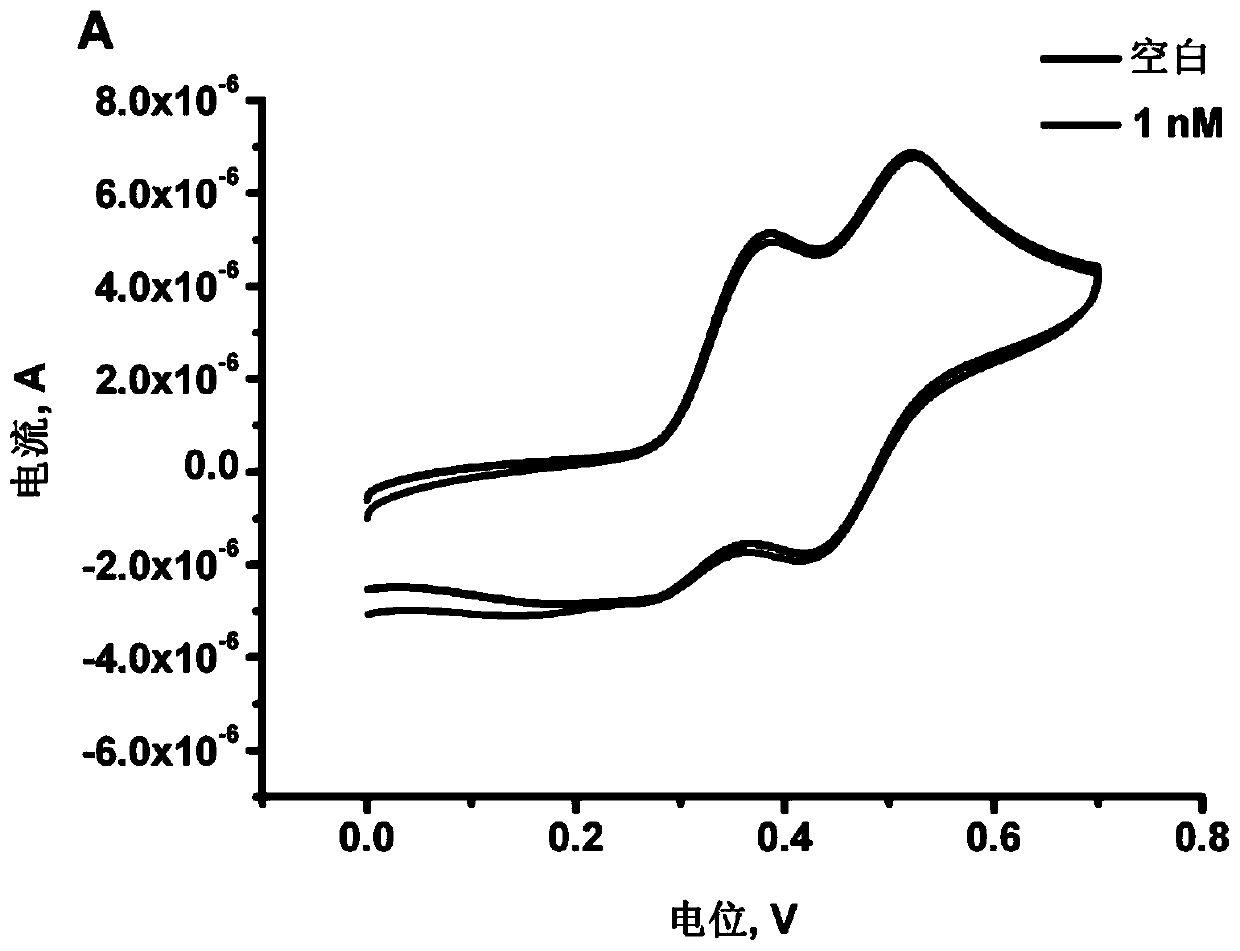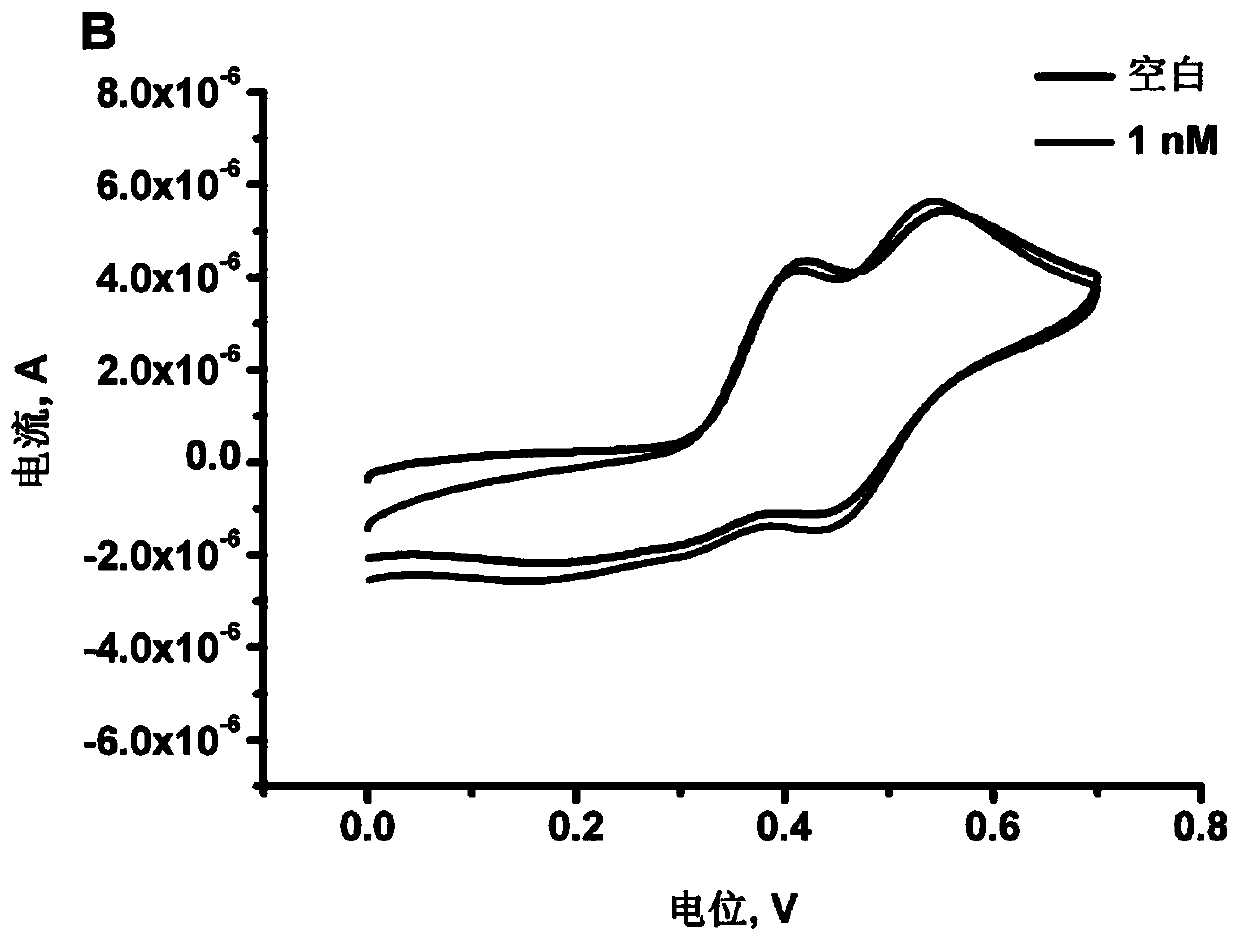Polyadenine-based DNA capture probe, biosensor and detection method thereof
A biosensor and capture probe technology, applied in the field of electrochemical detection, can solve the problems of cumbersome steps, restrict the development of electrochemical biosensors, and high synthesis cost, and achieve the effects of broad application prospects, favorable hybridization reaction, and easy operation.
- Summary
- Abstract
- Description
- Claims
- Application Information
AI Technical Summary
Problems solved by technology
Method used
Image
Examples
Embodiment 1
[0045] The construction of the DNA capture probe of embodiment 1 polyadenine
[0046] Design and synthesis of DNA capture probes containing different numbers (5, 10, 20, 30 and 40) of adenines (referred to as poly A5, poly A10, poly A20, poly A30 and poly A40) , the nucleotide sequences of which are respectively shown in SEQ ID No. 1-5 in the sequence listing, and the polyadenine DNA capture probes are obtained after artificial synthesis (Life Technology Biological Co., Ltd.).
[0047] Simultaneously, a single-stranded DNA with and only 5 adenines (namely A5, whose nucleotide sequence is shown in SEQ ID No. 6 in the sequence listing) was synthesized to serve as a control for subsequent experiments.
Embodiment 2
[0048] Example 2 Biosensors Containing Polyadenine-Based DNA Capture Probes
[0049] (1) Take the gold electrode (2mm diameter, Shanghai Chenhua Instrument Co., Ltd.) that has been physically polished and electrochemically cleaned with sulfuric acid, rinse the electrode surface thoroughly with ultrapure water Milli-Q, and then wash it with N 2 Blow dry to dispose of clean electrodes.
[0050] (2) Add 5 μL of 0.1 μM polyadenine DNA capture probe poly A30 obtained in Example 1 dropwise to the cleaned electrode obtained in step (1), react at 25° C., and assemble overnight to obtain an assembled electrode.
[0051] (3) Use 150 μL of 0.1 mM MCH (purchased from sigma) to seal the vacancy of the assembled electrode obtained in step (2) for 30 minutes, and the sealed electrode is a biosensor that can be used for detection.
[0052] (4) 1nM of the DNA to be tested (its nucleotide sequence is as shown in SEQ ID No.8 in the sequence listing) and 100nM signal probe (its nucleotide sequen...
Embodiment 3
[0056] Electrochemical detection of different assembly methods of embodiment 3
[0057] (1) Take the gold electrode (2mm diameter, Shanghai Chenhua Instrument Co., Ltd.) that has been physically polished and electrochemically cleaned with sulfuric acid, rinse the electrode surface thoroughly with ultrapure water Milli-Q, and then wash it with N 2 Blow dry to dispose of clean electrodes.
[0058] (2) Add 5 μL of 0.1 μM poly A30 obtained in Example 1 dropwise to the cleaned electrode obtained in step (1), react at 25° C., and assemble overnight to obtain an assembled electrode.
[0059] (3) Use 0.1 mM MCH and 0.1 μM A5 prepared in Example 1 to seal the gaps of the assembled electrodes obtained in step (2) for 30 minutes to obtain sealed electrodes A and B.
[0060] In addition, step (4) is directly performed after step (2) to obtain an electrode C assembled by adding poly A30 dropwise but not sealed by any substance.
[0061] All the other steps are identical to Example 2.
...
PUM
 Login to View More
Login to View More Abstract
Description
Claims
Application Information
 Login to View More
Login to View More - R&D
- Intellectual Property
- Life Sciences
- Materials
- Tech Scout
- Unparalleled Data Quality
- Higher Quality Content
- 60% Fewer Hallucinations
Browse by: Latest US Patents, China's latest patents, Technical Efficacy Thesaurus, Application Domain, Technology Topic, Popular Technical Reports.
© 2025 PatSnap. All rights reserved.Legal|Privacy policy|Modern Slavery Act Transparency Statement|Sitemap|About US| Contact US: help@patsnap.com



